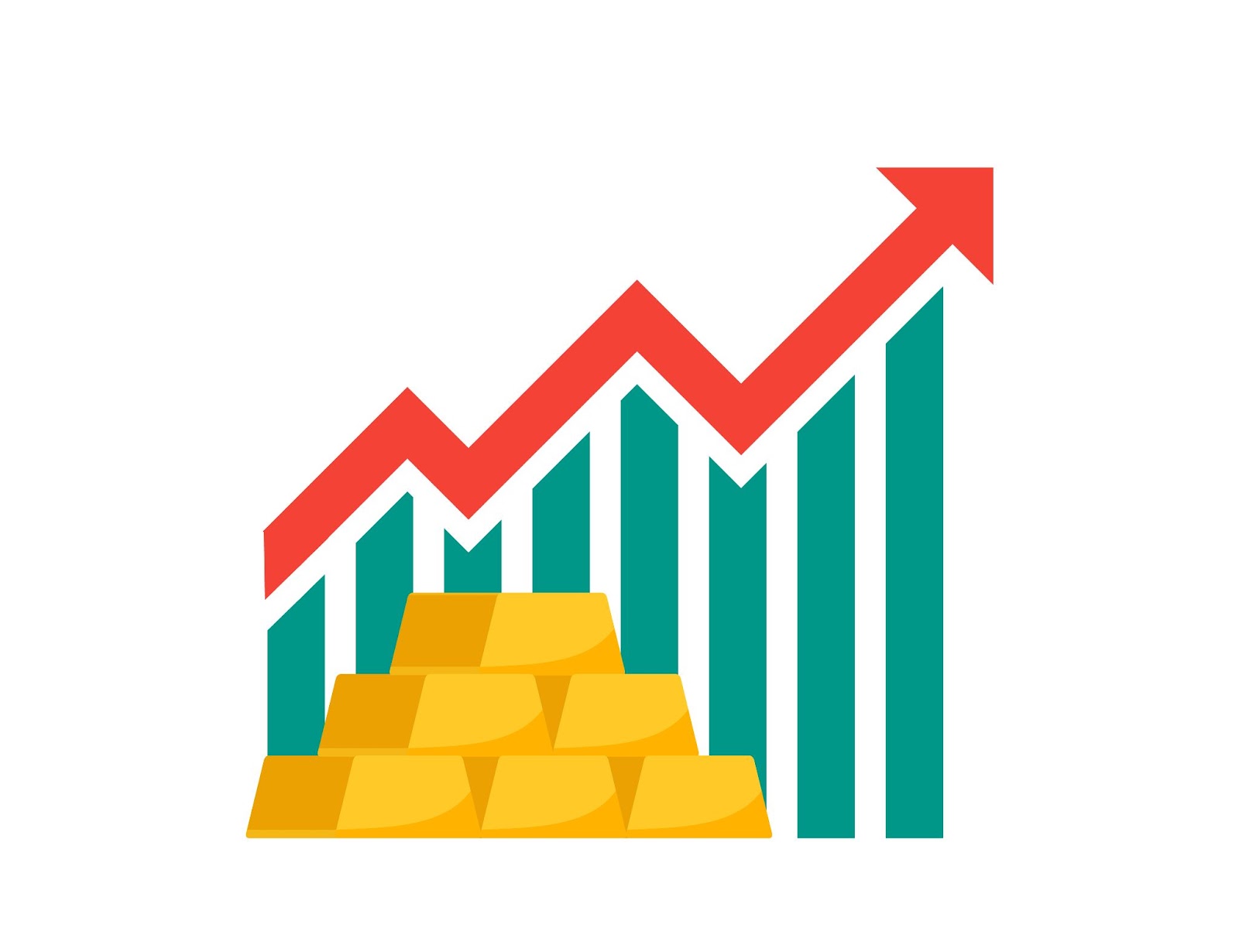TradingKey - Have the recent geopolitical tensions in the Middle East made you feel every market fluctuation pulling at your nerves?
When Houthi attacks on Red Sea shipping forced 30% of global container trade to reroute, and drone strikes on Iran’s nuclear facilities escalated regional tensions, you may have noticed gold prices rising visibly. On June 17, the spot price of gold in New York surpassed $3,398 per ounce, up over 15% from the start of the year.
Whenever economic storms hit — be it the oil crisis of the 1970s, the Russia-Ukraine war in 2022, or the ongoing Middle East turmoil in 2025 — gold has consistently defied downturns. Over a century of market trends has proven: gold is not just jewelry, but a “wealth protector” during crises.

(Source: Shutterstock)
How Has Gold Performed Historically in Times of Crisis?
The 1970s Oil Crisis
In 1973, OPEC imposed an oil embargo due to the war, causing oil prices to quadruple overnight. Drivers in the U.S. might have spent three hours queuing at gas stations. Meanwhile, savvy investors quietly bought gold.
During the first oil crisis, gold prices surged from $100 per ounce to $200, doubling in value.
By 1979, the Iranian Revolution triggered a second crisis, sending oil prices soaring again. Gold prices shot up to $850 per ounce, meaning $1,000 invested in gold in 1970 would have grown to $8,500 by 1980.
Why did gold rise?
The oil crisis fueled high inflation and dollar depreciation. Gold acted as an "inflation-resistant currency," preserving value while paper money lost purchasing power.
The 2008 Global Financial Crisis
Jump ahead to 2008, when the global financial crisis caused a significant increase in gold prices.
On the day Lehman Brothers collapsed, U.S. stocks plunged, and bank customers rushed to withdraw cash. Initially, gold prices fell 28% as investors sold gold for liquidity.
However, the Federal Reserve’s massive money printing spurred fears of currency devaluation.
Over two years, gold prices soared 78% — $100,000 invested in gold at the 2008 lows would have gained $78,000 by 2010.
When bank credit collapsed, gold became the “most reliable money.”
Gold vs. Other Assets
Asset Type | Performance During the 2008 Financial Crisis | Performance of Gold During the Same Period |
S&P 500 | Down -57% (wealth shrinkage) | Dropped initially, then rose by 78% |
Corporate Bonds | Down -30+% (wave of defaults) | Preservation of value |
U.S. Housing Prices | Down -30+% (some regions halved) | Increased against the trend |
Compared to other assets, gold’s price remained relatively stable — even rising — during economic crises.
This unique behavior has made gold a haven for investors during turmoil, highlighting its importance in portfolio diversification.
The 2022 Russia-Ukraine War
When the war broke out in February 2022, global stock markets plummeted, oil prices spiked, and gold prices rose against the trend.
On February 24, gold jumped from $1,900 per ounce to $2,070, gaining 9% within a month.
European investors rushed to buy gold, fearing war-driven energy shortages and runaway inflation, much like stocking up on fire extinguishers when your neighbor’s house catches fire. For them, gold became the “financial fire extinguisher.”

(Source: Freepik)
Long-Term Gold Investment: "Preserving Value" or "Falling Behind"?
Some argue: "If you bought $100 worth of gold in 1972, it would be worth $4,500 by 2024.
But the same amount invested in the S&P 500 would have grown to $18,500. Doesn’t this prove gold underperforms?"
But here’s the key point they miss:
How much of the S&P 500’s 185x gain was driven by the Fed’s loose monetary policy? The U.S. stock rally post-2008 is closely tied to dollar depreciation.
Gold’s 45x return, however, represents rewards for surviving crisis after crisis.
Professional investors don’t bet everything on gold. Instead, they allocate 5%-10% of their portfolios to it, like buying insurance for their investment portfolio.

(Source: Freepik)
What Are the Key Drivers Behind Rising Gold Prices?
Strong Safe-Haven Demand
During economic crises, investors often feel fear and uncertainty, as their assets drift like small boats in a stormy sea, vulnerable to being swallowed by market chaos.
In search of stability, many individuals turn to gold as a representation of lasting wealth.
Gold has played a vital role in human society due to its long history and unique physical properties.
It is not just a beautiful adornment but also a reliable store of value.
During economic downturns, when other assets depreciate, gold often remains stable or even rises, making it a haven for investors.
A Shelter During Liquidity Crises
When economic winter arrives, market liquidity dries up like an empty reservoir. Companies struggle to pay wages, and investors rush to cash out but find no buyers.
In such moments, stocks may resemble unsold secondhand goods — discounted but unwanted — while gold never loses its resale value.
Whether on Wall Street or in London’s historic gold exchanges, gold can always be exchanged for cash.
When central banks create money to stabilize markets, inflation often follows, diminishing the value of savings. Gold, however, often rises against this tide.
During the 1970s, inflation in the U.S. surged to 13%, leading to a decline in the dollar's value.
Yet gold prices surged 20-fold over a decade. A $100 investment in gold then would have preserved 20 times more purchasing power than keeping cash in a bank — this is the power of gold as an "inflation hedge."
A Barometer of Market Confidence
Economic crises spread like a virus, crippling real economies and eroding investor confidence.
When everyone around you complains about an impending economic collapse, don’t you feel anxious too?
During the 2011 European debt crisis, Greece nearly defaulted, and fears of the euro turning into worthless paper gripped Europe. Investors rushed to dump euro assets and poured into gold.
Within a year, gold prices jumped from $1,300 to $1,920 per ounce, hitting an all-time high.
This wasn’t just trading — it was Europeans voting with real money: “We trust nothing but gold!”
Psychological Factors
Emotions like fear and greed heavily influence investor behavior during crises, directly shaping decision-making and, ultimately, gold prices.
The herd mentality adds an intriguing twist. When institutional investors aggressively buy gold, retail investors follow, creating a self-reinforcing cycle of “buying drives price up, and rising prices drive more buying.”
In 2023, after Bridgewater Associates increased its gold holdings, gold prices surged 3% within a week, proving this dynamic at work.
Understanding indicators like the Fear & Greed Index can help predict trends. When the index dips below 20 (extreme fear), gold often hits a bottom; when it exceeds 80 (extreme greed), a pullback may be near.


